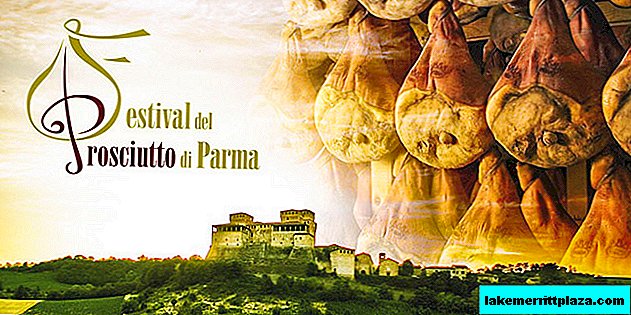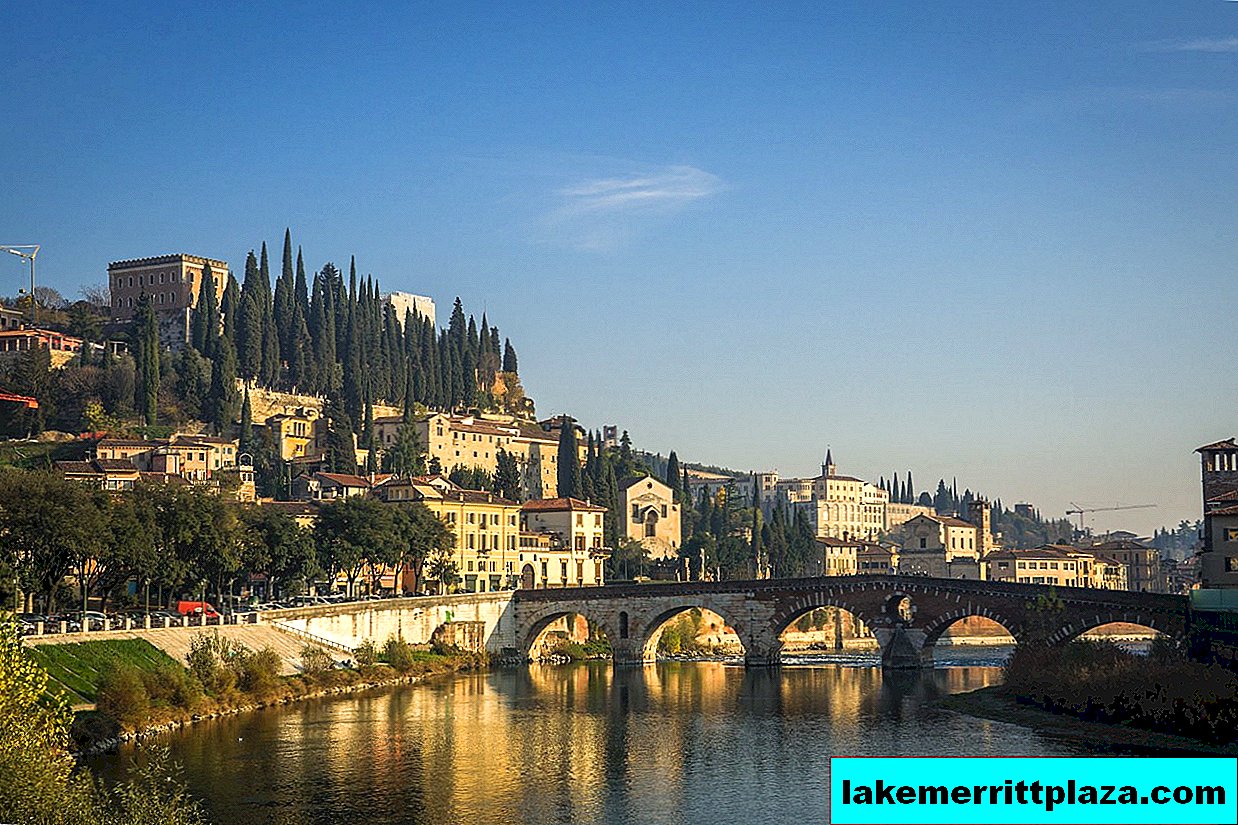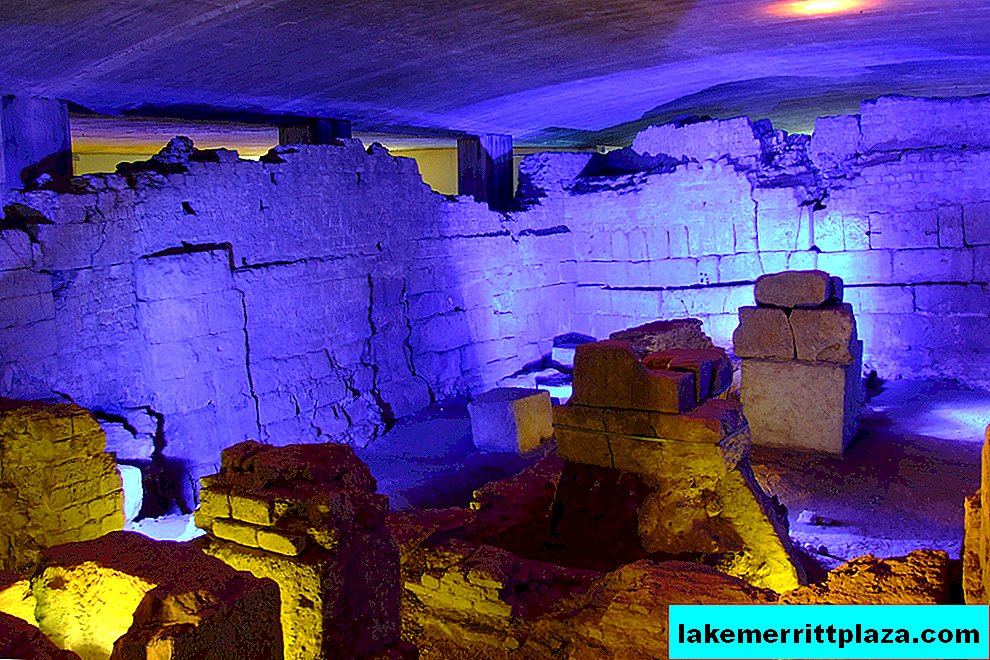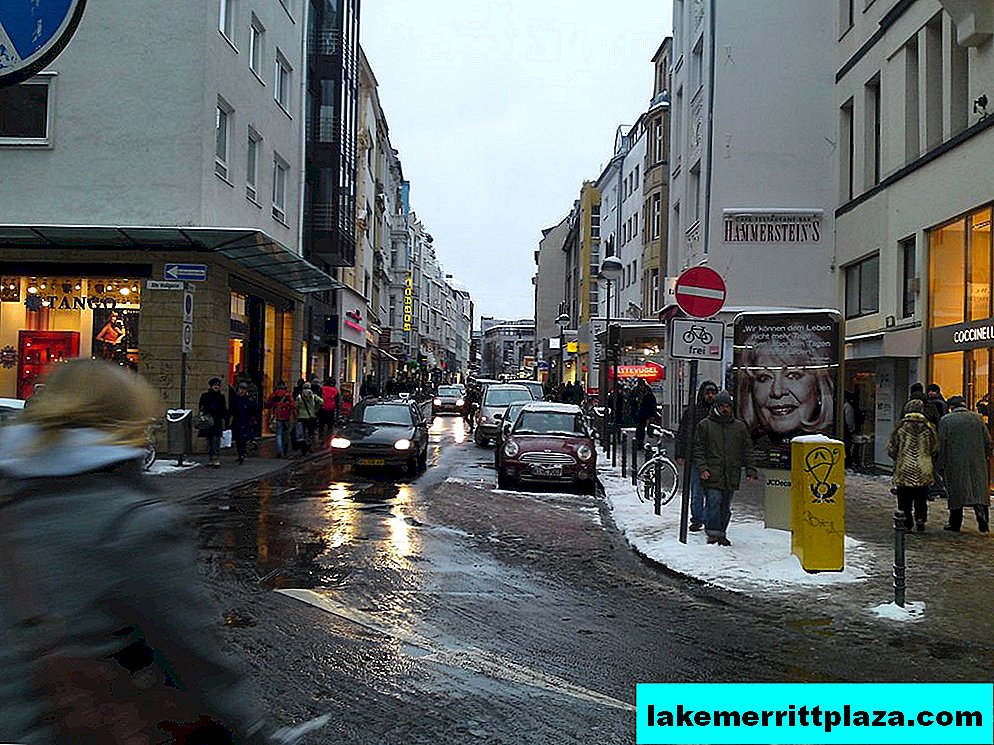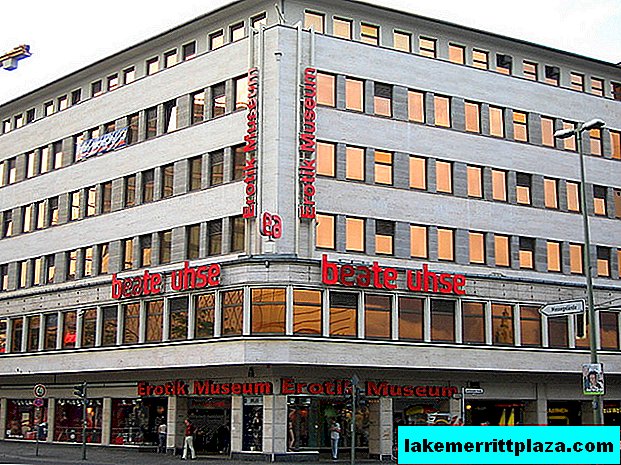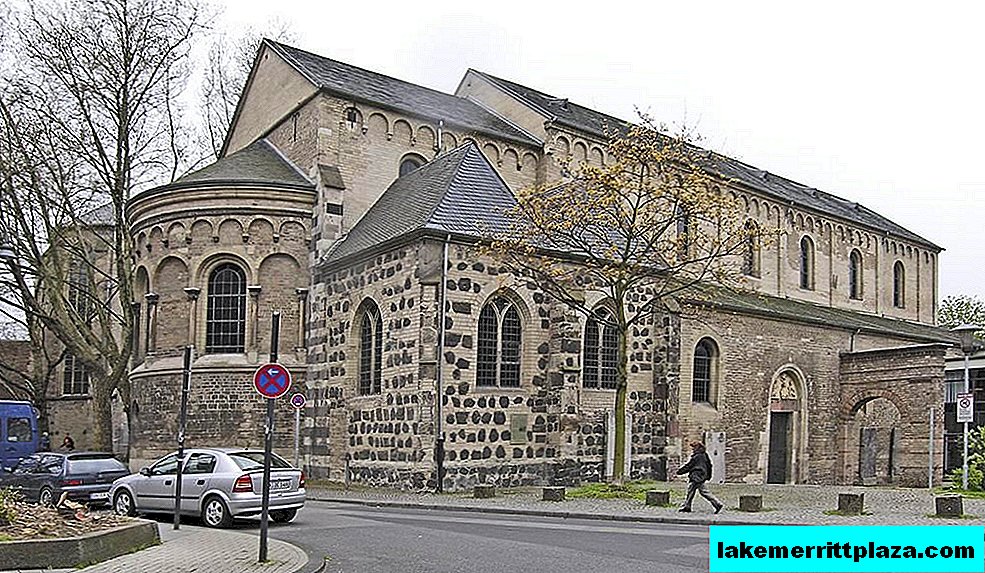You can move between the sights of Venice not only on foot or on gondolas. The city also has public transport - unusual, but convenient. We are talking about vaporetto, passenger ships, cruising along the canals of Venice and between the islands of the Venetian archipelago. Let's try to understand the features of this type of transport in order to use it efficiently and without overpaying.
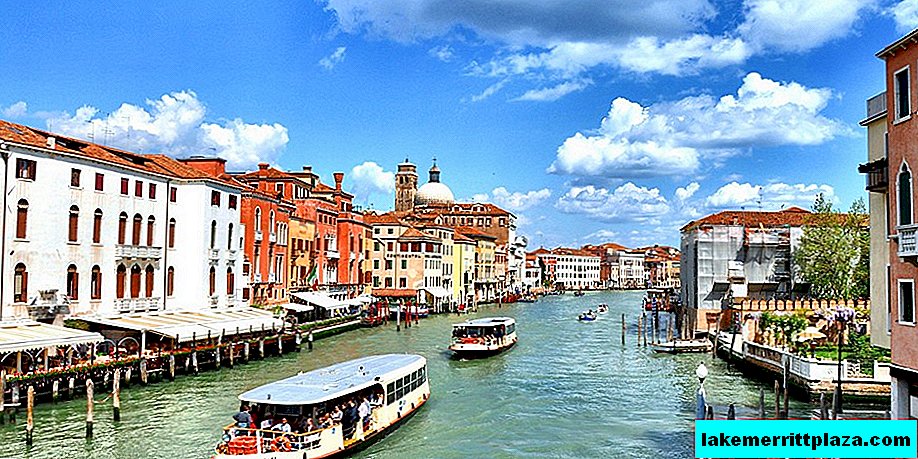
River trams
In fact, a vaporetto is the same bus or tram, it only moves through the water. The principles of work are standard: several routes with constant stops, water trams run on a schedule, passengers are charged a fare, fare dodgers are fined. In Russian, vaporetto means "steamboat" (from vapore - "steam"), but modern ships have diesel engines. The team is the captain and sailor, the latter announces stops, moors the vessel, directs passengers to the exit, monitors the safety of boarding and disembarking.
The convenience of a vaporetto lies not only in the ability to navigate city channels and the entire archipelago. The main thing is that the berths are located on both sides of the canal, not always connected by bridges, and the ships serve as ferries, transporting people from one coast to another.

The first vaporetto appeared in Venice in 1881 and soon gained great popularity. Over time, the number of steamboats increased to several tens. Today, ACTV (Azienda Consorzio Trasporti Venezia) is responsible for the operation of the vaporetto transport network. Periodically, she has to face the confrontation of the gondoliers -from the very beginning they perceived the new mode of transport as a threat to their incomes, and from time to time they organize strikes and accuse the vaporetto of polluting the water and air and the occurrence of dangerous situations: motor ships and boats make waves during movement. Sometimes the protest actions of the gondoliers are successful: for example, some time ago the speed of movement of a vaporetto was legally limited to a value of 8 km / h.
Berths
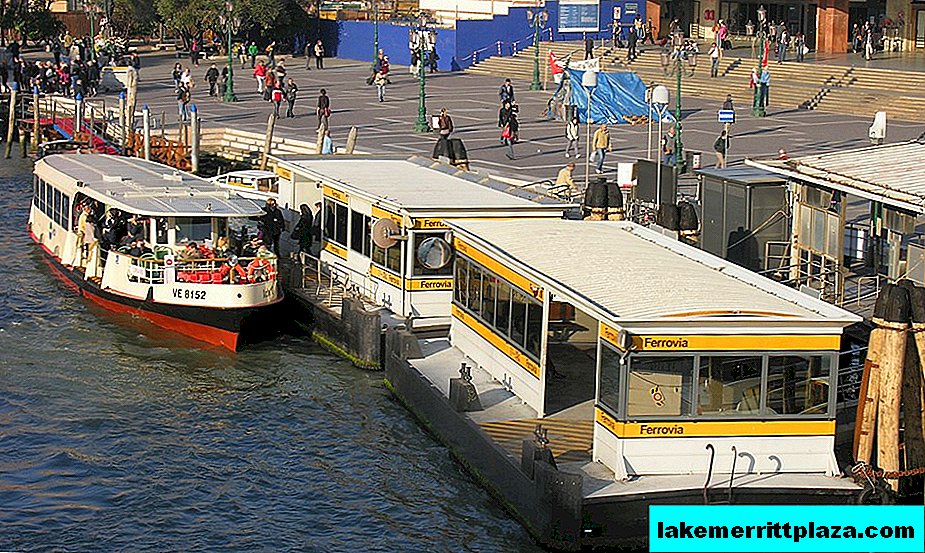
All the berths where the vaporetto stops stop look the same: a white-painted landing booth with bright orange stripes.
A large black inscription is the name of the stop. Passengers enter and exit on two separate bridges. Inside the landing stage there are several zones:
- In one, passengers are awaiting the arrival of a ship;
- The second serves to disembark passengers;
- After the third one, boarding takes place: access is prohibited if the vessel is not at the berth, when it is moored, when the passengers are disembarking.
At each berth there is an attendant who will answer your questions.
Be careful when choosing the direction of movement: on large berths, vessels sailing in different directions are moored in different places, on small ones - in one place. Understand where you need help information plates.
Types of ships
For the transport of passengers ACTV uses three types of vessels.
- The vaporetto itself is a squat ship with a flat roof and a deck; seats an average of 230 people. They walk mainly along the Grand Canal and the Cannaregio Canal. Vaporetto vary in height (the bridges on some canals are very low), but are generally similar: an indoor cabin, an open platform-a platform with a roof, several seats are located on the bow and stern.
- Motoscafo is smaller in size (capacity is up to 160 people), but they have better seaworthiness, so these ships serve routes that run through large water around Venice. They also go to the island of Murano and between small islands, where passenger traffic is small. Motoscafos are more like large boats, completely enclosed.
- Motonavi, as the name implies, is designed to navigate by sea, and not through narrow channels. They look like a vaporetto, but much larger and more spacious (up to 600 passengers). Such ships go to the distant islands of the Lagoon, for example, to the island of Burano. Some motonavi have a high deckhouse and two decks.
Routes
In total, Venice and the islands pass over 25 river tram routes. Many of them are circular. There are express routes, one night route, and in 2012 a panoramic tourist route appeared; You can start moving on it every 30 minutes.
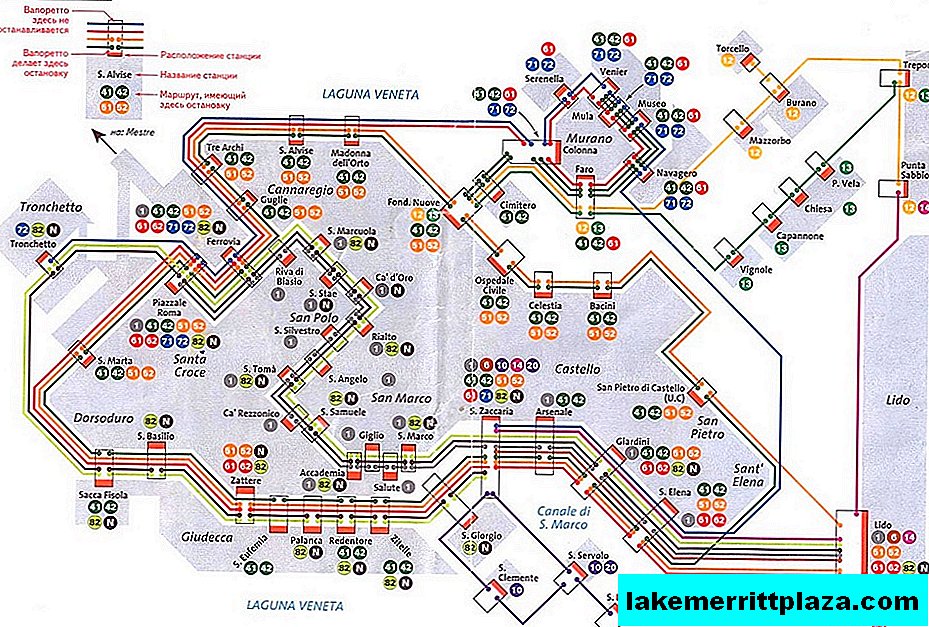
The Grand Canal runs routes 1, 2 (express), N (night) and tourist. As such, one can also consider route 1: it is quite long, with many stops, and allows you to make a general impression of the island part of Venice. Routes 3, 4, 5 (all express) connect the center of Venice, the island of Murano, the railway station and the bus station. You will get to Murano, Lido and other islands of the Venetian lagoon using routes 13, 20, LN (goes to the north of the lagoon), DM (direct express train to Murano). All routes are on the carrier's website; in the same place - the exact schedule of movement of water trams.
- You can download the route map in PDF from the official website: www.actv.it
Main lines
The most requested routes are along the Grand Canal, from the train station via Piazzale Roma and Piazza San Marco. Travel time: 45 minutes (route 1) and 25 minutes (route 2; stops only in crowded places).
- Route 1 goes to the island of Lido (Lido), route 2 - to the island of Judecca (Giudecca); Lido can only be reached in high season.
- Route 3 serves Murano, connecting the island with Venice train stations. Use this route if you do not want to "crawl" along the Grand Canal crowded with ships; so you get to the right place much faster.
- Routes 4.1 and 4.2 go around the ring; the first clockwise, the second in the opposite direction. They begin and end on the island of Murano.
Other island lines
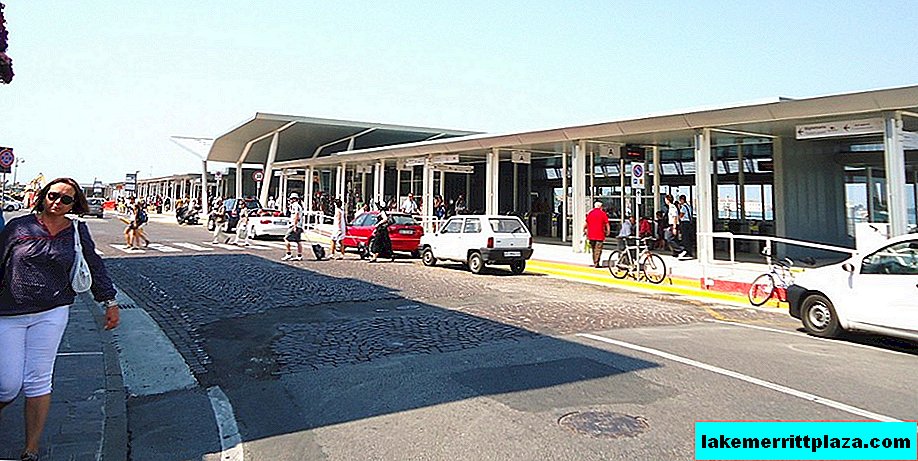
Routes 12 and 14 are suitable for those who want to visit the San Michele cemetery island or relax on the Lido beaches. In the first case, take route 12. It starts at the Fondamente Nova stops and passes through the large islands of Burano and Torcello. The total duration of the trip is about 50 minutes. To get to the starting point, Fondamente Nova, you can walk to it or take route 4 or 5.
Lido beaches continue on route 14. If you are not a fan of organized beach holidays, do not go to Lido, but follow to Punta Sabbioni, where a large campground is located.
Night line

There is only one vaporetto line at night, from San Marco to Lido. The route is indicated by the letter N. It can be used from 23:20; The last river tram arrives at its final destination at 5:27. Departure is approximately every half hour, after 1:00 - every hour. The route is long and difficult; We recommend that you carefully study it first.
Schedule
Almost all stops are equipped with information boards indicating the nearest flights and waiting times. The intervals of movement are different - on the main routes, for example 1, the waiting time is about 10 minutes. On other lines you have to wait longer - up to half an hour. During the day, in the morning and evening hours, the intervals of movement can vary. Changes in the schedule may also occur depending on weather conditions (fog, poor visibility, etc.). A route map and an up-to-date schedule are on each berth; if necessary, you can ask a question to the duty officer.
The average vaporetto speed does not exceed 8 km / h, in addition, they do not go through narrow channels, so it is sometimes more convenient to get to the desired place on foot.
Cost
Vaporetto is not a cheap pleasure. This is almost the most expensive form of urban public transport around the world: one trip costs 7.5 euros. But water taxi boats are even more expensive, and there is no need to talk about gondolas. In addition, knowing several rules for using fixed-route motor ships, you can save.
A standard ticket for one trip will cost 7.5 euros. It is valid for all routes (except 16, 19 and Alilaguna) for 75 minutes after activation (passage). During this period, you can make transfers, go back, etc.
If your plan is to stay in Venice longer, it is better to immediately get the so-called tourist transport cards, in other words, travel cards for several days. Then staying on the islands and moving around them will be much cheaper. The card can be purchased for 1, 2, 3 days or a week; it costs 20, 30, 40 and 60 euros, respectively, and includes travel not only on river trams, but also on ordinary buses.
- Important: daily ticket valid for exactly 24 hours from the moment of its first composting. For example, you hit a ticket on September 10 at 09:00, so you can use the vaporetto until 9 AM on September 11 without restrictions.
The most attractive option for the price is a 3-day ticket for 28 euros, but it is available only to children and youth from 6 to 29 years old. A prerequisite for buying such a ticket is the presence of a Rolling Venice card. It, in turn, costs 6 euros, but additional discounts are available on it in shopping centers and museums in Venice.
Children under 6 years of age enjoy free vaporetto. Also free of charge is travel for wheelchair users and accompanying persons. For the stroller itself you have to pay 1.5 euros.
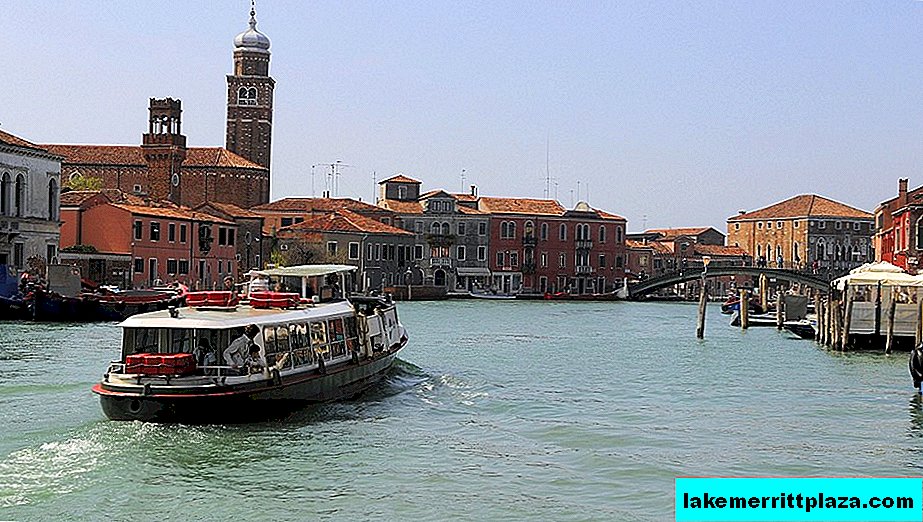
Important: the above applies to all routes except 16, 19 and Alilaguna. According to the latter, a boat goes to and from Marco Polo Airport. Route 16 connects Fusina directly (Fusina, a campsite in the Mestre district, on the mainland of Venice) and the pier of the Zattere promenade (Fondamenta delle Zattere), on route 19 ships go from San Marco to Chioggia Island.
- We recommend reading: how to get from Treviso airport
How and where to buy
Tickets are sold at berths, at ACTV vending machines and ticket offices, as well as at tobacco and newsagents. A ticket can also be purchased on board (including if there is no ticket office or ticket machine on the pier) - but only for a single trip. In most cases, you can pay, not only in cash, but also by credit card.
- To save time, we advise you to plan your stay in Venice, book your ticket in advance online.
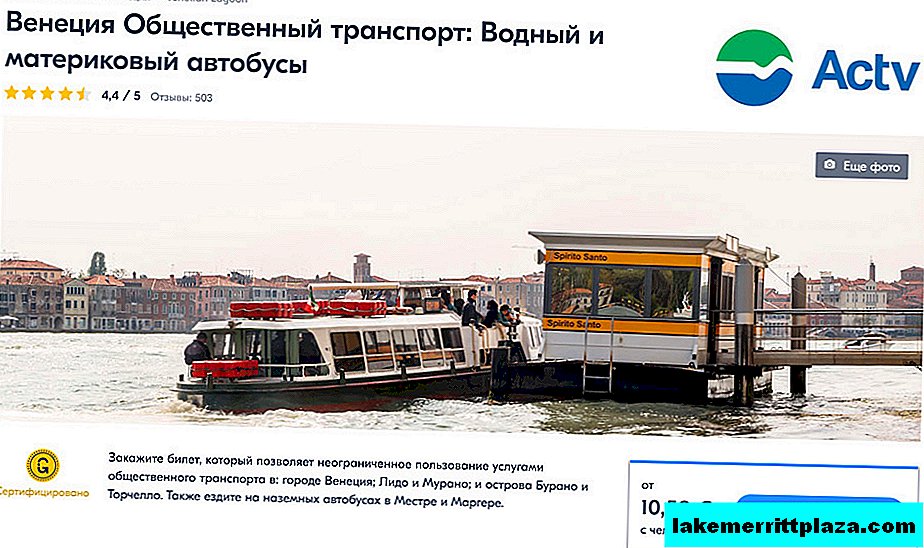
After booking, you will be sent a QR and PNR code, immediately upon arrival at the Santa Maria Lucia train station, you will not go to the ticket office, but to the vending machine on the pier, here is the point on the map. Enter your code there and get a ticket. The ticket can be activated any day. Baggage is included.
Children under 6 years old travel for free.
For example, you bought a 48-hour ticket in advance and activated it on October 10 at 11:00 - it will be valid until October 12 at 10:59. Overpayment for such a reservation and time saving is only 3 euros.
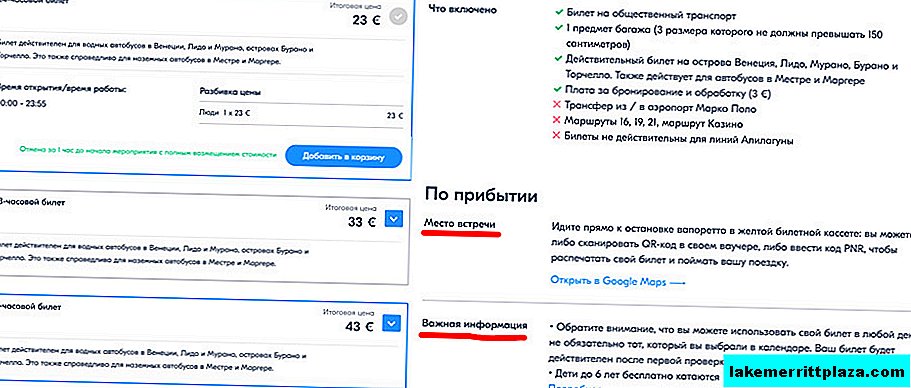
By the way, the inhabitants of Venice themselves pay much less for the use of river trams, but tickets can be purchased at discounted prices only by presenting the relevant document.
Rules and Tips
Tickets must be purchased. Their presence is checked regularly, the fines are very high: you will have to pay not only the fare, but also an administrative penalty of 60 euros. It is allowed to carry a baby carriage when folded, one piece of baggage of standard dimensions (no more than 150 cm in the sum of measurements), as well as hand luggage in the amount of two items (no longer than 120 cm). Everything from above is paid extra.
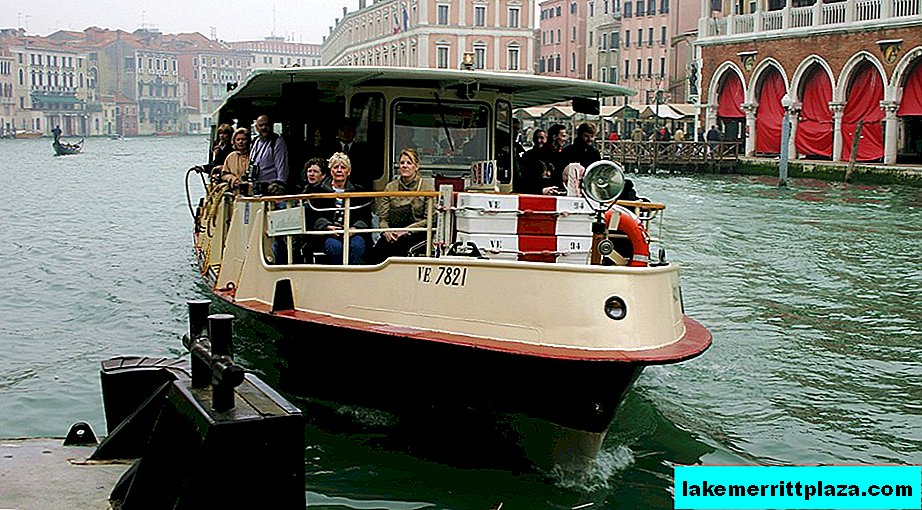
The purchased ticket must be activated by attaching to the validator and holding it until the sound signal. This should be done at each berth; if you did not activate the ticket upon boarding, you may be fined. You must save the ticket until the end of the trip. Presenting a ticket to a sailor at the entrance to the ship is not necessary.
Landing is carried out only after the exit of all passengers; until this moment, access to the landing zone is strictly prohibited. You must strictly follow the instructions of the sailor. For passengers with reduced mobility, special retractable platforms are provided with which you can get on board.
The best places to view are on the bow or stern.. There are few of them, so it’s better to catch the river tram at the initial stops, so you will have more chances to take the desired place. Do not forget that on a vaporetto only places in the cabin are completely closed from wind and rain. If you are sitting in open places, only the roof protects you from the weather, and then not always.
Toilets are not on all vaporetto; they can be equipped with vessels that go along long routes.
Vaporetto is not a tourist river bus, but a common form of public transport, so during rush hours it is filled up as much as possible by sitting and standing passengers. Keep this in mind and get ready for the exit in advance so as not to pass the desired stop.
Smoking is prohibited not only on the vaporetto, but also on the landing stage.
Closely monitor what is happening around you, do not keep valuables and money in sight and in easily accessible places: pickpockets thieves are found in Venice, as in any popular tourist city.

